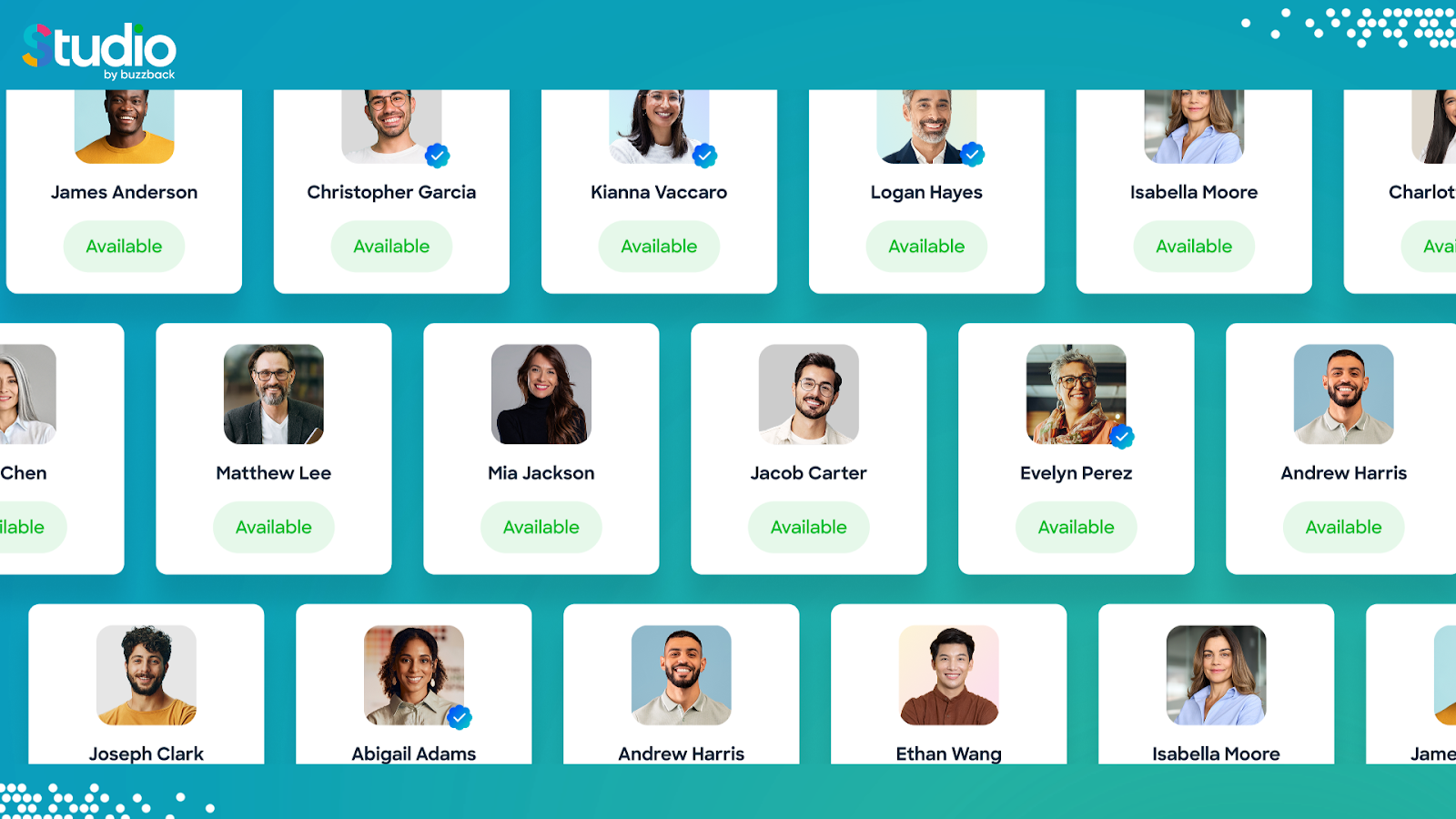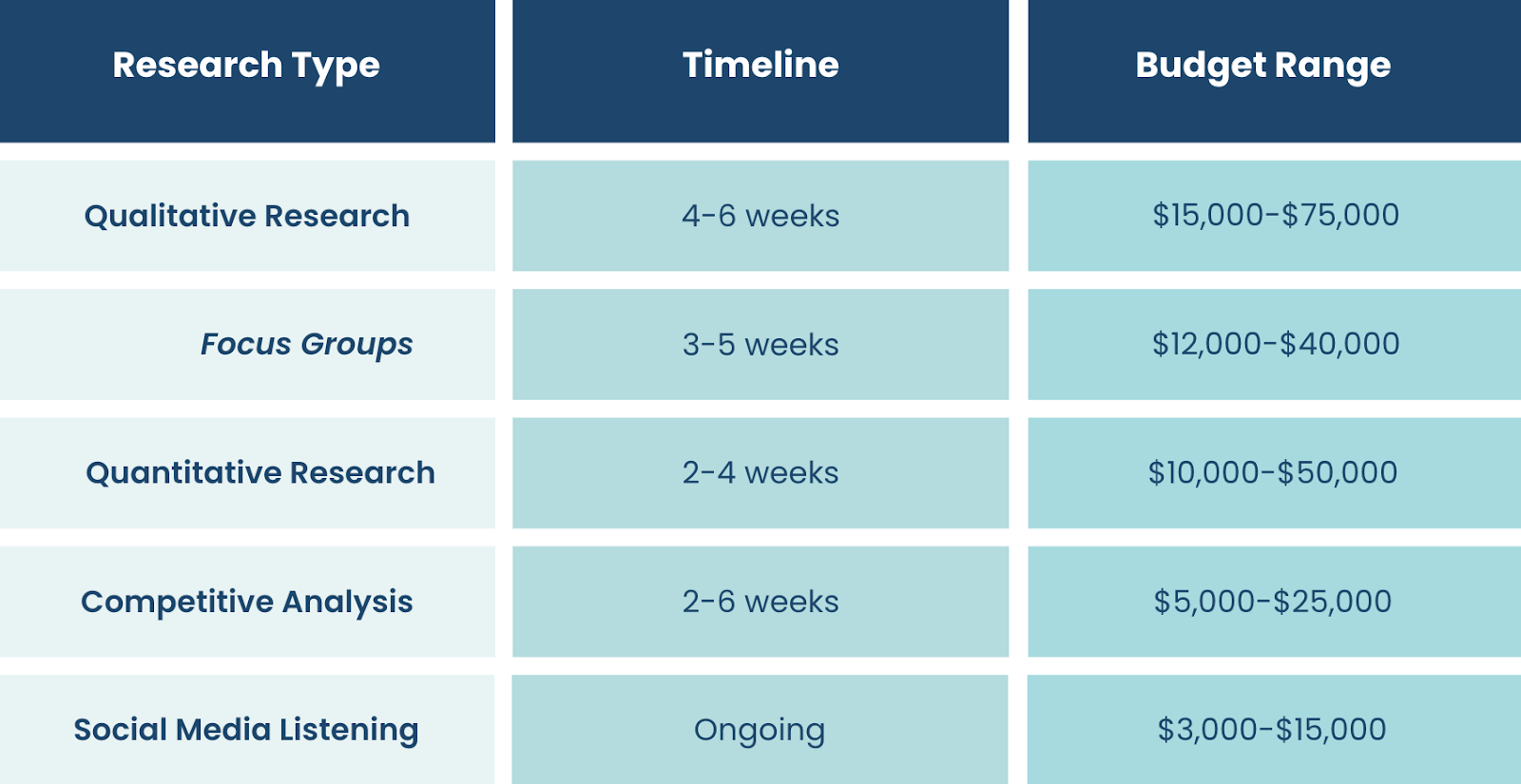
A major beverage company spent $50 million launching a “revolutionary” energy drink, only to watch it fail spectacularly within six months. The culprit? They used the wrong type of market research.
This story isn’t unique. Every year, businesses make costly decisions based on research that looks impressive but answers the wrong questions.
Bad market research is often worse than no research at all. It creates false confidence that leads to terrible business decisions.
The right type of marketing research enables businesses to make informed decisions, reducing risk and improving the chances of success.
Choosing the right type of marketing research isn’t just about gathering data. It’s about gathering the right data through effective marketing research processes that actually drive smart business strategy. In this guide, you’ll discover 10 essential types of market research, learn when to use each one, and get a decision framework that helps you choose the perfect approach for your specific situation.
Table of Contents
- Understanding Market Research: Primary vs Secondary
- 10 Types of Market Research
- How to Choose the Right Research Type: Strategic Decision Framework
- Integrating Research Types for Maximum Impact
- Cost and Timeline Guide for Each Research Type
- Common Mistakes That Undermine Research Success
- Frequently Asked Questions

Understanding Market Research: Primary vs Secondary
Before diving into specific research methods, let’s clarify a fundamental distinction that shapes every market research strategy. There are two fundamental approaches: primary and secondary research. Primary research involves gathering fresh data directly from your target market through surveys, interviews, or observations. Secondary research analyzes existing data from industry reports, competitor analysis, or government statistics.
Think of primary research as cooking from scratch: you control every ingredient and process. Conducting your own market research allows you to tailor data collection to your specific needs. Secondary research is like shopping at a well-stocked market – the ingredients already exist, but you need to know what to look for. Secondary research often relies on relevant data from public domain data, research journals, and research centers. The best research strategies combine both approaches, using secondary research to understand the landscape and primary research to uncover insights specific to your business challenges.
10 Types of Market Research
Each type of market research serves a different purpose in your business strategy. Here’s your complete guide to understanding when and how to use each approach effectively.

1. Qualitative Research
Qualitative research explores the “why” behind consumer behavior through in-depth conversations, observations, and open-ended questioning. Methods like focus groups are used to gather data and provide deeper insights into customer psychology, uncovering emotions, motivations, and cultural factors that drive purchasing decisions.
Example: A streaming service may want to understand why subscribers cancel after free trials. Through qualitative research involving one-on-one interviews with churned trial customers, they discover that users felt overwhelmed by content choices rather than dissatisfied with selection quality. This approach yields detailed insights that inform business decisions, such as redesigning their recommendation algorithm and reducing churn by 35%.
Best Use Cases: New product development, understanding customer pain points and whitespace opportunities, exploring brand perception, or when you need to understand complex decision-making processes with prospective customers to gain detailed insights.
Timeline & Budget: 4-6 weeks, $15,000-$75,000 depending on scope and methodology.
Common DIY Pitfalls: Untrained moderators are likely to ask leading questions. Having an unbiased, third-party lens is key to avoid biasing the interviews and your interpretation of the outcomes. When teams run their own research, often there’s a vested interest in completing the research to initiate a project, rather than genuinely exploring what whitespace opportunity might look like.
Also, delivering bad news or negative customer feedback to your colleagues can be uncomfortable. This sometimes results in watering down the customer feedback, or putting a positive spin on something to the detriment of the learnings.

Get Professional Qualitative Research Results
Qualitative research requires specialized moderation skills to uncover genuine insights. Studio connects you with vetted qualitative research experts who handle everything from methodology design to final insights delivery.
Connect with Expert Moderators →

2. Quantitative Research
Quantitative research uses numerical data and statistical analysis to measure behaviors, preferences, and trends across large sample sizes. This method provides statistically significant findings that can be generalized to broader populations. In quantitative research, historical data and sales data are commonly analyzed to identify historical trends and build a robust data set for more accurate analysis.
Example: A retail clothing brand surveys 2,500 customers across different demographics to determine optimal pricing for a new product line. The quantitative research reveals that 68% of their target market considers $89 the maximum acceptable price point for a particular SKU, leading to a pricing strategy that maximizes both sales volume and profit margins. By leveraging this data set, the business can generate data driven insights for strategic planning.
Best Use Cases: Market sizing, pricing research, measuring customer satisfaction, validating hypotheses with statistical confidence, and generating data driven insights for business strategy.
Timeline & Budget: 2-4 weeks, $10,000-$50,000 for comprehensive studies.
Common DIY Pitfalls: Poor survey design, inadequate sample sizes, and statistical misinterpretation can lead to false conclusions about market opportunities.

3. Exploratory Research
Exploratory research investigates new markets, emerging trends, or poorly understood consumer behaviors. This preliminary research helps define problems and identify opportunities before investing in more extensive studies.
Example: A food company notices increasing mentions of “plant-based proteins” in social media conversations. They conduct exploratory research through small focus groups and online communities to understand this trend, discovering a $2 billion market opportunity in plant-based snacks that leads to a successful new product category. During this phase, companies often conduct market research to identify potential customers and analyze emerging trends, ensuring their new offerings align with the interests and needs of their target audience.
Best Use Cases: Entering new markets, investigating emerging trends, or when you’re unsure what questions to ask in future research.
Timeline & Budget: 2-4 weeks, $8,000-$25,000 for initial exploration.
Common DIY Pitfalls: Rushing to conclusions with limited data or failing to identify the most promising areas for deeper investigation.

4. Generative Research
Generative research systematically describes market characteristics, customer segments, or competitive landscapes. This method provides detailed profiles of current market conditions without trying to explain causation. It is often used for market segmentation and understanding customer preferences, enabling businesses to identify patterns in consumer behavior and align strategies with market demands.
Example: A software company conducts generative research to map their customer journey across different user segments. They discover that enterprise customers take 127 days on average to make purchasing decisions, while small businesses decide within 23 days. This insight helps them create segment-specific sales strategies that improve conversion rates by 40%. Generative research also helps businesses profile target customers, allowing for more effective and tailored marketing efforts based on customer preferences.
Best Use Cases: Customer segmentation, market profiling, competitive positioning analysis, understanding current market state, and profiling target customers for marketing strategies.
Timeline & Budget: 4-10 weeks, $20,000-$60,000 for comprehensive market descriptions.
Common DIY Pitfalls: Collecting too much irrelevant data or failing to organize findings into actionable customer segments or insights about customer preferences.

5. A/B Testing
A/B Testing determines relationships and outcomes between variables through controlled experiments and testing, often in-market. This method proves whether specific changes will produce desired outcomes.
Example: An e-commerce company wants to know if offering free shipping will increase sales. They run a controlled experiment offering free shipping to randomly selected customers while maintaining standard shipping for others. The A/B Test proves that free shipping increases average order value by 31%, justifying program expansion.
Best Use Cases: Testing different marketing, pricing, or feature tactics to determine their impact on business outcomes, measuring campaign effectiveness, optimizing product features, or proving ROI of business changes.
Timeline & Budget: 6-12 weeks, $25,000-$100,000 for rigorous experimental design.
Common DIY Pitfalls: Poorly controlled experiments that fail to isolate variables, leading to incorrect attribution of cause and effect.

6. Focus Groups
Focus groups bring together 2-8 participants for guided discussions about products, services, or concepts. This method facilitates dynamic conversation between participants, where building and debating ideas, topics, or campaigns benefit the learnings. Focus groups are valuable for co-creating with consumers on new ideas, collecting feedback and optimizing existing ideas, and even pressure testing ad campaigns or campaign ideas to identify any unforeseen red flags or to help improve communication and visual delivery.
Example: An automotive manufacturer uses focus groups to test reactions to three potential electric vehicle designs. During the sessions, participants reveal that charging anxiety is their primary concern, not vehicle aesthetics. This insight shifts the marketing focus from design features to charging infrastructure partnerships, resulting in 50% higher pre-order rates.
Best Use Cases: Concept testing, advertising evaluation, product feedback, or exploring group consensus on complex topics.
Timeline & Budget: 4-6 weeks, $12,000-$40,000 for multiple group sessions.
Common DIY Pitfalls: Unable to control the dynamics and personalities in the group to ensure everyone is heard and no one person dominates. Difficulty balancing the flow of a natural conversation to uncover unanticipated insights and the predetermined moderator guide of questions.

7. Competitive Analysis
Competitive analysis systematically examines competitor strategies, strengths, weaknesses, and market positioning. Effective competitor research involves gathering and analyzing research data to understand market positioning and strategy. This secondary research method uses publicly available information to understand the competitive landscape.
Example: A meal delivery startup analyzes competitor pricing, delivery areas, and customer reviews across 15 major markets. They discover that competitors consistently receive complaints about late deliveries in suburban areas, leading them to focus on suburban expansion with guaranteed 30-minute delivery as their key differentiator.
Best Use Cases: Strategic planning, identifying market gaps, benchmarking performance, or understanding competitive threats and opportunities.
Timeline & Budget: 2-6 weeks, $5,000-$25,000 for comprehensive competitor mapping.
Common DIY Pitfalls: Focusing only on obvious competitors while missing indirect competition or failing to update analysis as the competitive landscape evolves.

8. Market Trend Analysis
Market trend analysis examines patterns in consumer behavior, industry developments, and economic indicators over time. This method identifies emerging opportunities and potential disruptions. Analyzing economic trends and shifts in brand recognition helps businesses anticipate market shifts, understand broader market conditions, and make informed strategic decisions.
Example: A beauty brand analyzes five years of search data, social media trends, and industry reports to identify the growing “clean beauty” movement. Their trend analysis reveals that “sulfate-free” searches increased 340% in two years, prompting them to reformulate their entire shampoo line and capture 15% market share in the natural hair care segment.
Best Use Cases: Long-term strategic planning, product development roadmaps, identifying emerging market opportunities, or timing market entry.
Timeline & Budget: 4-8 weeks, $10,000-$35,000 for comprehensive trend mapping.
Common DIY Pitfalls: Confusing short-term fluctuations with long-term trends or failing to distinguish between lasting changes and temporary fads.

9. Brand and Product Research
Brand and product research focuses on how consumers perceive, interact with, and feel about specific brands or products. This research uncovers what drives customer satisfaction, shapes consumer preferences, and influences purchasing decisions to inform marketing strategies and product development.
Example: A snack company conducts brand research to understand why their product is popular among millennials but struggles with Gen Z consumers. Through surveys and in-depth interviews, they discover that Gen Z values sustainable packaging and bold flavors. This insight leads to a product redesign and new marketing campaign, resulting in a 20% increase in market share among younger consumers.
Best Use Cases: Brand positioning, product optimization, understanding brand perception gaps, or developing targeted marketing campaigns that resonate with specific audiences.
Timeline & Budget: 4-8 weeks, $18,000-$65,000 for comprehensive brand studies including multiple touchpoints.
Common DIY Pitfalls: Asking direct questions about brand preference instead of exploring underlying emotional connections, or failing to identify shifts in consumer attitudes across different demographic segments.

10. Social Media Listening
Social media listening monitors online conversations, sentiment, and brand mentions across digital platforms to understand real-time consumer opinions and emerging issues. This method involves ongoing data collection to monitor conversations and identify trends within target markets, helping businesses better understand consumer needs and preferences.
Hypothetical Example: A restaurant chain uses social media listening to track customer sentiment during their menu redesign. They discover that 73% of mentions about their new healthy options are positive, but customers are confused about portion sizes. This insight leads them to adjust portion descriptions and add visual guides, improving customer satisfaction scores by 28%.
Best Use Cases: Brand monitoring, crisis management, product feedback collection, or identifying customer service issues in real-time.
Timeline & Budget: Ongoing monitoring, $3,000-$15,000 monthly for comprehensive social listening platforms.
Common DIY Pitfalls: Focusing only on volume of mentions without analyzing sentiment context or missing important conversations happening on niche platforms.

How to Choose the Right Research Type: Strategic Decision Framework
Use this strategic framework to match your business objectives with the most effective research approach. Before selecting a research type, it is essential to define clear research objectives to ensure accurate analysis and reliable insights that align with your goals.
Decision Tree Guide:
- Need to understand "why" customers behave certain ways? → Qualitative Research or Focus Groups
- Need to measure and quantify market size or behaviors? → Quantitative Research
- Exploring a completely new market or trend? → Exploratory Research
- Want to map current market conditions? → Generative Research
- Need to prove cause-and-effect relationships? → A/B Testing
- Working with limited budget and timeline? → Competitive Analysis or Social Media Listening
Red Flags That Indicate You Need Professional Help:
- Your research will influence decisions worth more than $100,000
- You lack experience in research methodology design
- Your team doesn't have time to properly execute and analyze research
- You need statistically valid results to convince stakeholders
Ready to Execute Your Research Strategy?
While this framework helps you choose the right research type, execution is where most teams struggle. Qualitative research and focus groups, in particular, require specialized moderation skills to avoid biased conclusions that can derail business decisions.

Studio connects you with vetted qualitative research experts who handle everything from methodology design to final insights delivery. Skip the DIY risks and get professional-grade research that drives confident business decisions.
Integrating Research Types for Maximum Impact
The most successful research strategies combine multiple methods in a logical sequence. Integrating different research types often involves combining various data collection methods—such as surveys, interviews, and social media analysis—to build a comprehensive data set for analysis. You may want to start with exploratory research to identify key questions, move to descriptive research to map the landscape, then use causal research to test specific hypotheses.
For example, a comprehensive market entry strategy might begin with competitive analysis and trend analysis to understand the market, follow with qualitative research to understand customer needs, then use quantitative research to size the opportunity and validate pricing strategies.
Smart integration also means using secondary research to inform primary research design. Industry reports and competitive analysis can help you ask better questions in surveys and focus groups, maximizing the value of your research investment.
Cost and Timeline Guide for Each Research Type
Costs vary based on sample size, geographic scope, and complexity. Professional execution typically delivers 3-5x higher ROI than DIY approaches.

Common Mistakes That Undermine Research Success
Even well-intentioned research can lead you astray. Here are the five critical mistakes that turn promising market research into expensive lessons:
- Using the wrong research type for your objectives - Trying to answer “why” questions with quantitative surveys or “how many” questions with qualitative interviews.
- Inadequate sample sizes - Making business decisions based on too few responses or unrepresentative participant groups.
- Collecting irrelevant data instead of relevant data - Failing to focus on relevant data, especially in secondary research, can undermine your ability to make informed decisions.
- Poor moderation skills - Untrained facilitators missing important emotional cues or failing to probe deeper when participants give surface-level responses.
- Misinterpreting data - Drawing conclusions that aren’t supported by the data or failing to consider alternative explanations for findings.
The biggest risk of DIY market research isn’t just wasted money—it’s the false confidence that leads to poor business decisions. When research appears scientific but suffers from methodological flaws, teams make expensive mistakes while believing they’re data-driven.
Summary and Future Directions
Market research remains a critical component of any successful business strategy. By leveraging a mix of primary research and secondary research—including qualitative research, quantitative research, and innovative market research methods, you can gain a comprehensive understanding of your target market, consumer behavior, and market trends.
Want help with your market research?
Contact Studio today to find out how we can help support your qualitative research needs.
Frequently Asked Questions
What are the main types of market research?
The main types of market research fall into two categories: primary research (qualitative, quantitative, exploratory, descriptive, and causal research) and secondary research (competitive analysis, trend analysis, industry reports, and social media listening). Each serves different business objectives and provides unique insights for decision-making.
What are the four types of market research?
The four fundamental types of market research are: 1) Exploratory research for investigating new opportunities, 2) Generative research for mapping current market conditions, 3) A/B Testing for proving cause-and-effect relationships, and 4) Predictive research for forecasting future trends and behaviors.
What are the methods of primary market research?
Primary market research methods include qualitative research (interviews, focus groups, ethnographic studies), quantitative research (surveys, polls, experiments), observational research (ethnographies, shop alongs), and experimental research (A/B testing, controlled trials). These methods gather fresh data directly from your target market.
When should I use qualitative vs quantitative research?
Use qualitative research when you need to understand motivations, emotions, or complex decision-making processes—essentially answering "why" questions. Use quantitative research when you need to measure behaviors, preferences, or market size—answering "how many" or "how much" questions. Many successful strategies combine both approaches.
How much should I budget for market research?
Market research budgets typically range from $5,000 for basic competitive analysis to $100,000+ for comprehensive market studies. A general guideline is to invest 1-3% of the potential decision value in research. For example, if you're making a $1 million decision, investing $10,000-$30,000 in quality research is often justified by improved outcomes.
Subscribe
Stay up to date on industry insights and resources from Studio.


